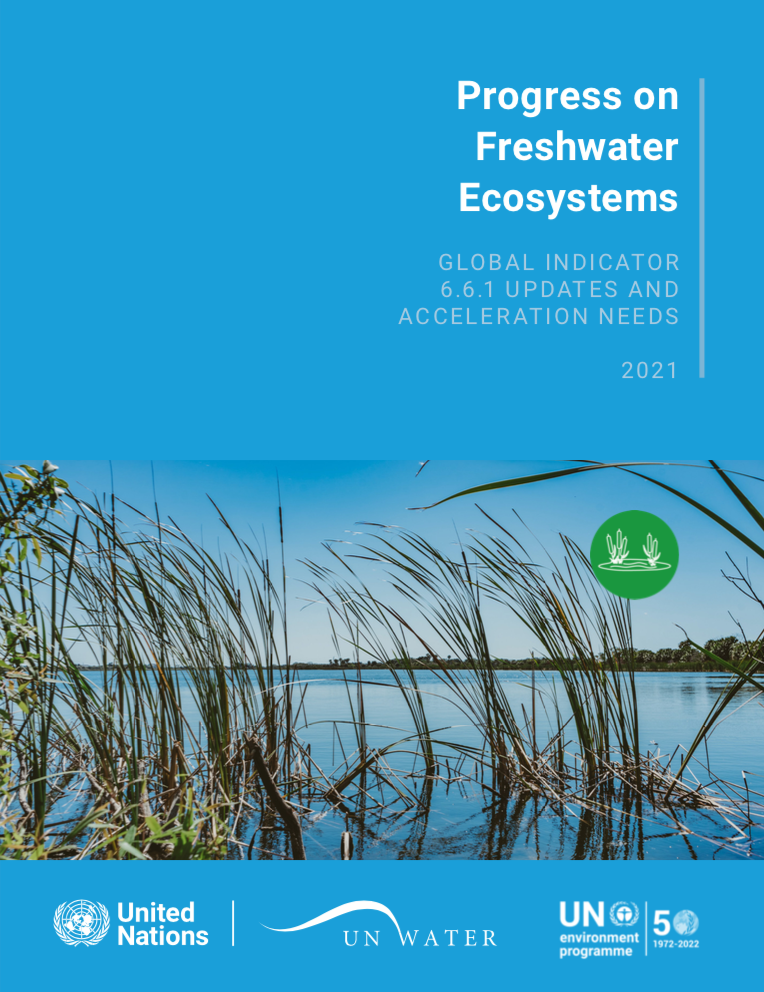Progress on Water-related Ecosystems – 2021 Update


Target 6.6 is: “By 2020, protect and restore water-related ecosystems, including mountains, forests, wetlands, rivers, aquifers and lakes.”
Indicator 6.6.1 tracks changes over time in water-related ecosystems. Earth observations are used to determine changes to surface water bodies, such as lakes, large rivers, flooded wetlands and reservoirs. Recent advances in analysing satellite imagery have also enabled global data sets on lake water quality, coastal mangroves and inland wetland areas. Knowing if and why changes in the extent of water-related ecosystems are occurring is important for water managers to ensure that ecosystem services continue to be provided.
This report presents the global status on water-related ecosystems and acceleration needs to achieve target 6.6 by 2030, based on the latest data on indicator 6.6.1.
Some key findings:
The extent of surface water available in a fifth of the world’s rivers basins has changed significantly during the last five years.
From a sample size of 2,300 large lakes, nearly a quarter recorded high to extreme turbidity readings in 2019.
More than 80 per cent of wetlands are estimated to have been lost since the pre-industrial era. The area covered by coastal mangroves has declined globally by 4.2 per cent since 1996.
- Download the report in English
- Download the executive summary
- Progress on Water-related Ecosystems Executive Summary Arabic,
- Progress on Water-related Ecosystems Executive Summary Chinese,
- Progress on Water-related Ecosystems Executive Summary English,
- Progress on Water-related Ecosystems Executive Summary French,
- Progress on Water-related Ecosystems Executive Summary Russian,
- Progress on Water-related Ecosystems Executive Summary Spanish
- Download an infographic explaining water turbidity and why it can be a problem
- Explore the latest data on 6.6.1, by country, region and for the whole world.
UN-Water Publications
UN-Water’s publications can be divided into two main groups: the publications that represent all Members and Partners of UN-Water – the collective products – and the publications that are under the UN-Water umbrella but produced by groups or individual UN-Water Members and/or Partners – the related products.
